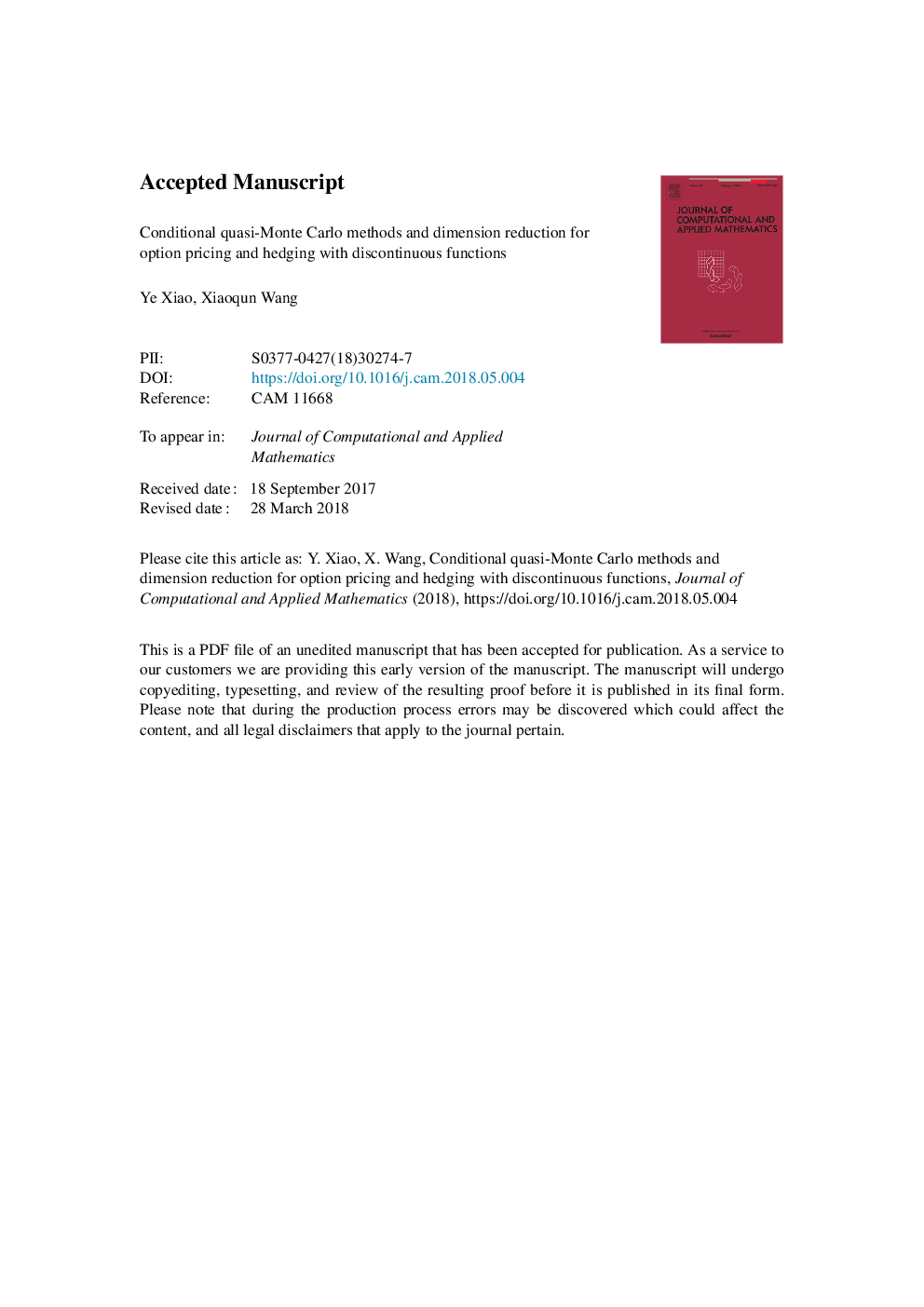| Article ID | Journal | Published Year | Pages | File Type |
|---|---|---|---|---|
| 8901826 | Journal of Computational and Applied Mathematics | 2018 | 39 Pages |
Abstract
Quasi-Monte Carlo (QMC) methods are efficient simulation tools for multidimensional integrations in financial engineering. Discontinuous functions occur commonly in pricing or hedging financial options. High dimensionality and the lack of smoothness may cause an adverse impact on the performance of QMC. In this paper, we develop a two-step procedure to handle the discontinuities and to reduce the effective dimensions successively. The first step is to smooth the discontinuous functions by using conditional QMC methods, which are deterministic versions of conditional Monte Carlo methods. We show how the discontinuities can be removed completely and how the required conditional expectations can be calculated analytically for some typical pricing and hedging problems. The second step is to reduce the effective dimensions of the resulting functions by using a new dimension reduction method based on principal component analysis (PCA). Rather than aiming at decomposing the covariance matrix of the Brownian motion as in the traditional PCA, the new dimension reduction method implements PCA on the gradients of the smoothed functions at a number of points in order to learn the inherent structure information. A suitable orthogonal transformation is obtained to reduce the effective dimensions. Numerical experiments show that the two-step procedure significantly improves QMC methods in pricing or hedging options with discontinuous functions.
Related Topics
Physical Sciences and Engineering
Mathematics
Applied Mathematics
Authors
Ye Xiao, Xiaoqun Wang,
